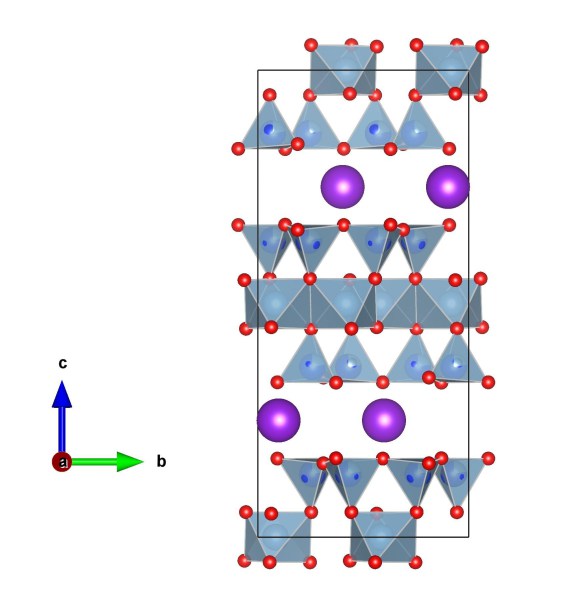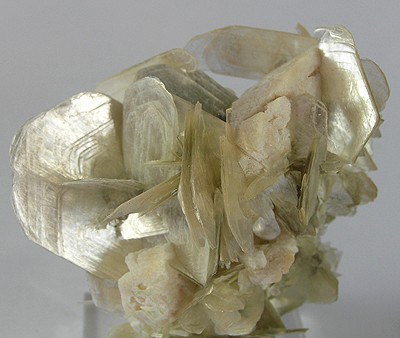You can see through it – Muscovite
What does it look like?

Image generated by the VESTA (Visualisation for Electronic and STructual analysis) software http://jp-minerals.org/vesta/en/
What is it?

A Muscovite crystal – picture by Rob Lavinsky, iRocks.com
Muscovite is a layered silicate material, like talc which we posted about last week. But unlike talc, this mineral is relatively strong and the layers can form into sheets as much as 15 m2. And it is also transparent. Muscovite’s ability to flake into large sheets and its transparency mean that it was used for windows before glass became more easily produced. The name is in fact derived from this, as when used for windows it was known as Muscovy-glass.
Where did the structure come from?
This structure of Muscovite came from the American Mineralogist Crystal Structure Database.






